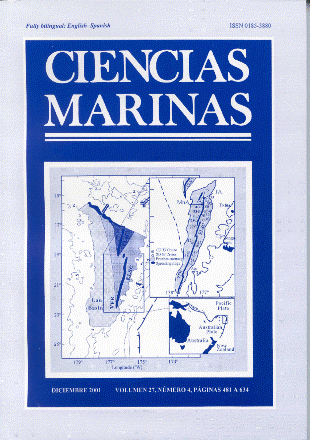Comparative feeding behaviour of Penaeus kerathurus (Forskål, 1775) (Crustacea, Penaeidae) and Palaemon Serratus (Pennant, 1777) (Crustacea, Palaemonidae) during larval development
Main Article Content
Abstract
Aspects of larval feeding of two autochthonous species of shrimp, Penaeus kerathurus (Forskål, 1775) and Palaemon serratus (Pennant, 1777), were studied. For P. kerathurus, feeding rates on Chlorella sp. and Isochrysis galbana Parke were determined at 3 different concentrations, during the protozoeal stage, and on Artemia franciscana Kellog at 4 different densities, during the mysis stage. The selectivity between Brachionus plicatilis Müller and Artemia franciscana nauplii was tested experimentally and the Ivlev selectivity index was calculated at the mysis stage. For Palaemon serratus Zoea III, V and VII, feeding rates on newly hatched A. franciscana nauplii, on metanauplii enriched during 24 hours in Protein Selco– and on starved metanauplii were determined. The Ivlev selectivity index was also calculated. The results revealed that Penaeus kerathurus and Palaemon serratus larvae have a negative selectivity for B. plicatilis. It is also suggested that the optimal density of A. franciscana for the mysis stage of P. kerathurus is around 10 nauplii mL–1. Finally, it was shown that the use of enrichment products leading to a very high lipid content of the prey may reduce their consumption rate.
Downloads
Article Details
This is an open access article distributed under a Creative Commons Attribution 4.0 License, which allows you to share and adapt the work, as long as you give appropriate credit to the original author(s) and the source, provide a link to the Creative Commons license, and indicate if changes were made. Figures, tables and other elements in the article are included in the article’s CC BY 4.0 license, unless otherwise indicated. The journal title is protected by copyrights and not subject to this license. Full license deed can be viewed here.

